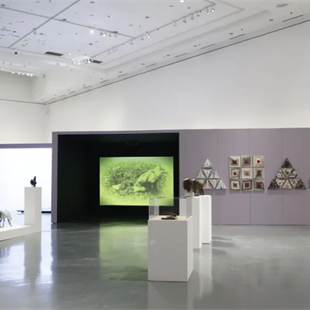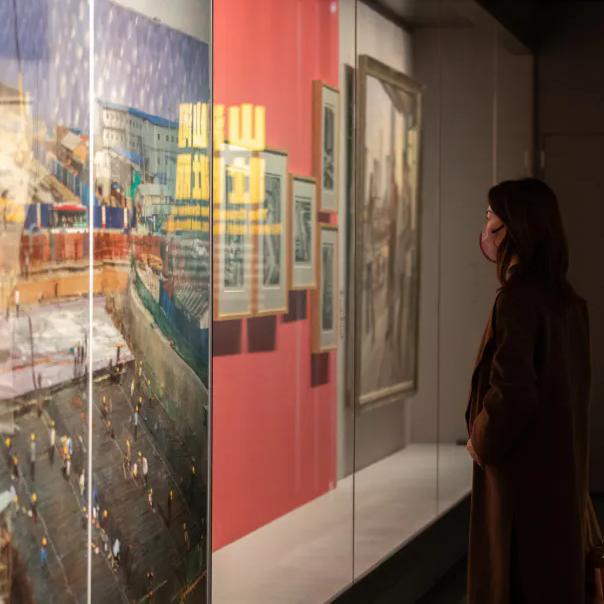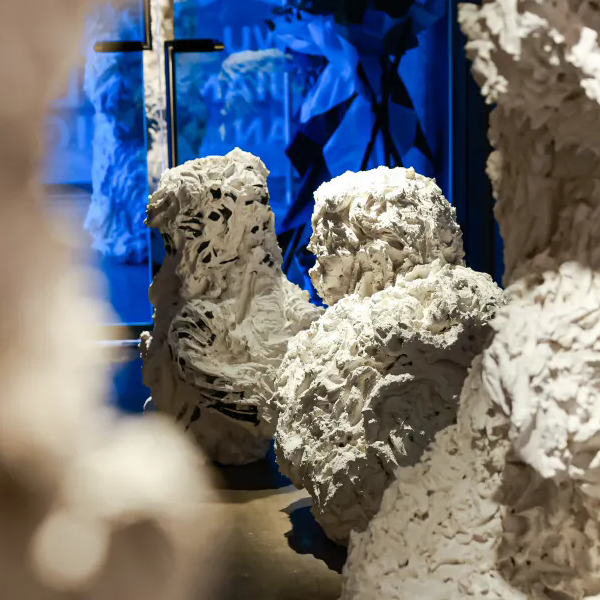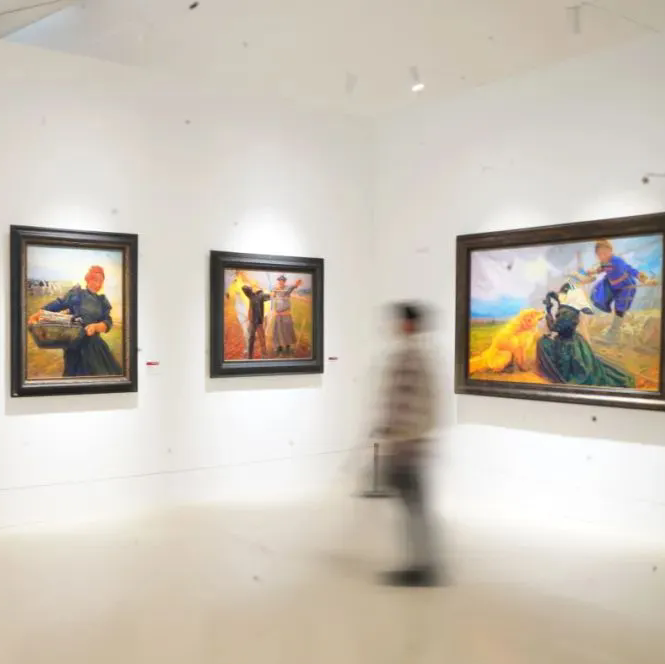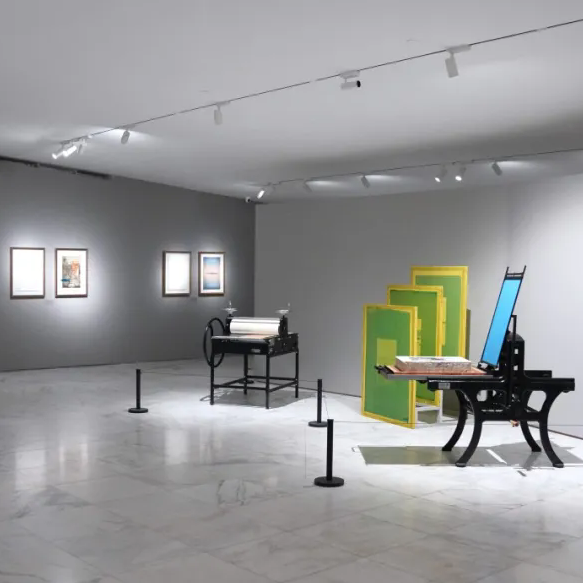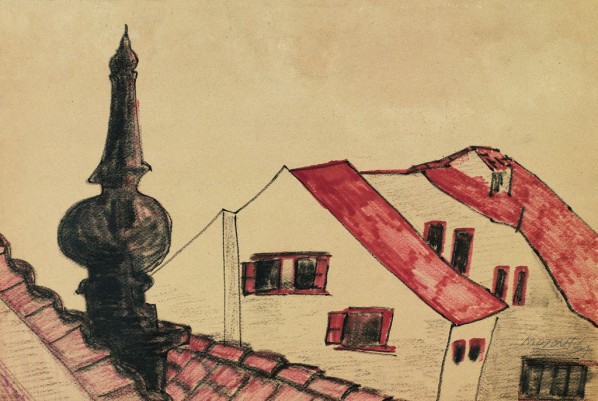
The name of Hoo Mojong might be unfamiliar to the fine arts circle in mainland China. However, she has been famous overseas for decades and is honored as the “most outstanding female painter of Chinese descent” after Pan Yuliang. On December 30th, 2011, a Solo Exhibition of Hoo Mojong Paper Works is unveiled at the Today Art Museum, Beijing and it will be exhibited through to January 19th, 2012. This is an important exhibition in terms of Hoo’s unique artistic language as well as her position as a pioneer of western painting in the history of Chinese fine arts.
Descended from Ningbo, Zhejiang province and born in Shanghai, Hoo Mojong has led a wandering life since she was 26. She has taken residence in Taiwan, Brazil, Spain and other countries and settled down in Paris in 1965. She returned to her ancestral home in the 1990s and again settled down in China. Her study at the Academic Grande Chaumiere has equipped her with the solid basic skills of painting. She won the laurel at Salon of Women with her oil painting—Series of Toys in 1968. Featuring the vivid depiction of ordinary things or scenes, her favorite material includes scenes out of the window, a pot of summer flowers, a color box loosely kept on the table cloth, cups, an ink bottle, apples and a crumpled cigarette. The artist changes the objective phenomena that are indifferent to people into some visual form which bear an unique inner experience. This exhibition can be taken as the most important artistic retrospective of Hoo Mojong in recent years, which also catalogues Hoo’s unique development of artistic expression.
[gallery link="file" orderby="title"]
Courtesy of the artist, all rights reserved.
Visual Diary
— For “Hoo Mojong Paper Works Exhibition”
by Jiang Mei, Curator and Art Critic
The artist Hoo Mojong lived abroad for half a century, with 37 years in France. After she came back and settled down in Shanghai 10 years ago, Shanghai Art Museum, the National Art Museum of China and other domestic art organizations held solo exhibitions for her in succession, to introduce her and her works. Her works have been known by more and more art followers and art lovers. People look at and research her and her works with surprise, just like they are re-discovering an artist in art history. She is recognized as the most outstanding overseas Chinese women artists after Pan Yuliang. She is also an artist who affects late twentieth-century Chinese Art history on a noumenon level.
37 years in Paris was the establishing and maturing time of her artistic personality and painting style. Paris nourished her, and gave her the free creative ideas, wide artistic horizons, and the edification of modern art. As a gifted artist with an introspective nature, she naturally integrates such nourishing into her own creation, to express those things or people in her life which touched her inner emotions. The strong thick colors, natural and pristine images, unique perspective, and gentle temperament which sometimes have some lonely and sad elements, all of these make her unique painting style. She showed herself in the affluence of brilliance in Paris and received wide recognition and praise. Fruit and vegetables, bread, flowers, clothes, workers, kids, women……these everyday things and people all display the most essential but emotional aspect in her paintings. They restored the original attribute of the material, and also offer a spirit and strength which only life has.
As we all know, oil painting is the most important part of Hoo Mojong’s works. In the past exhibitions and catalogues have occupied the main position, therefore, the oil paintings are the most well known. Her paper works, such as prints, sketches, gouaches, ink colors, have also appeared in these exhibitions and catalogues, but as a supporting role. Even so, their superb performance still deeply impresses people. People highly praised her paper works as they are naturally delicate but sensitive, strong but with a relaxed intelligence, like master pieces. Some of her paper works are really not inferior to her oil paintings.
I still remember the scene when I found out the batch of paper works which were brought back from Paris in Hoo Mojong’s studio in Shanghai. I was surprised not only by the big quantity, but also the various styles. Due to the length of time and having been affected by damp, some works turned slightly yellow, and some even had mildew. Just like “the antique patina”, they seem to be more historic and precious. That group of works was basically created in 1960s, 1970s and 1980s. There are prints, watercolors, gouache, sketches, drawings, and even some pictures the artist drew randomly with different tools. In one work, there is oil, ink, pencil, crayon, pen and so on. It is hard to classify it. It belongs to mixed media painting. The process of watching these works is exciting. The artist’s flash of genius, mood fluctuations, emotional sustenance and spiritual aspirations at that moment are truly and vividly reflected by these free images. It feels like reading the artist’s loose visual diary in which there is loneliness, sadness, sensation, love, perseverance, also insights and daydreams…… The artist’s various experiences and thoughts of life and art in different times and stages are presented as a whole.
This time, the exhibition by Today Art Museum is Hoo Mojong’s first Paper works exhibition. It means a lot. It will show almost 200 excellent paper works of the artist through different stages in her career, including the prints and ink color paintings during 60s and 70s, the sketches of figures and still-lives during 1970s, and also some sketches of figures and scenery made in various materials, such as gouache, watercolors, ink, pencil and pen, etc. Such an exhibition which covers Hoo Mojong’s whole art career, not only has a high artistic value in itself, in fact, the “diary character” of some works is as important as the visual documents of research by the artist and her creation. I believe that people cannot find a more plentiful or tridimensional artist than Hoo Mojong through this exhibition.
November, 26, 2011


